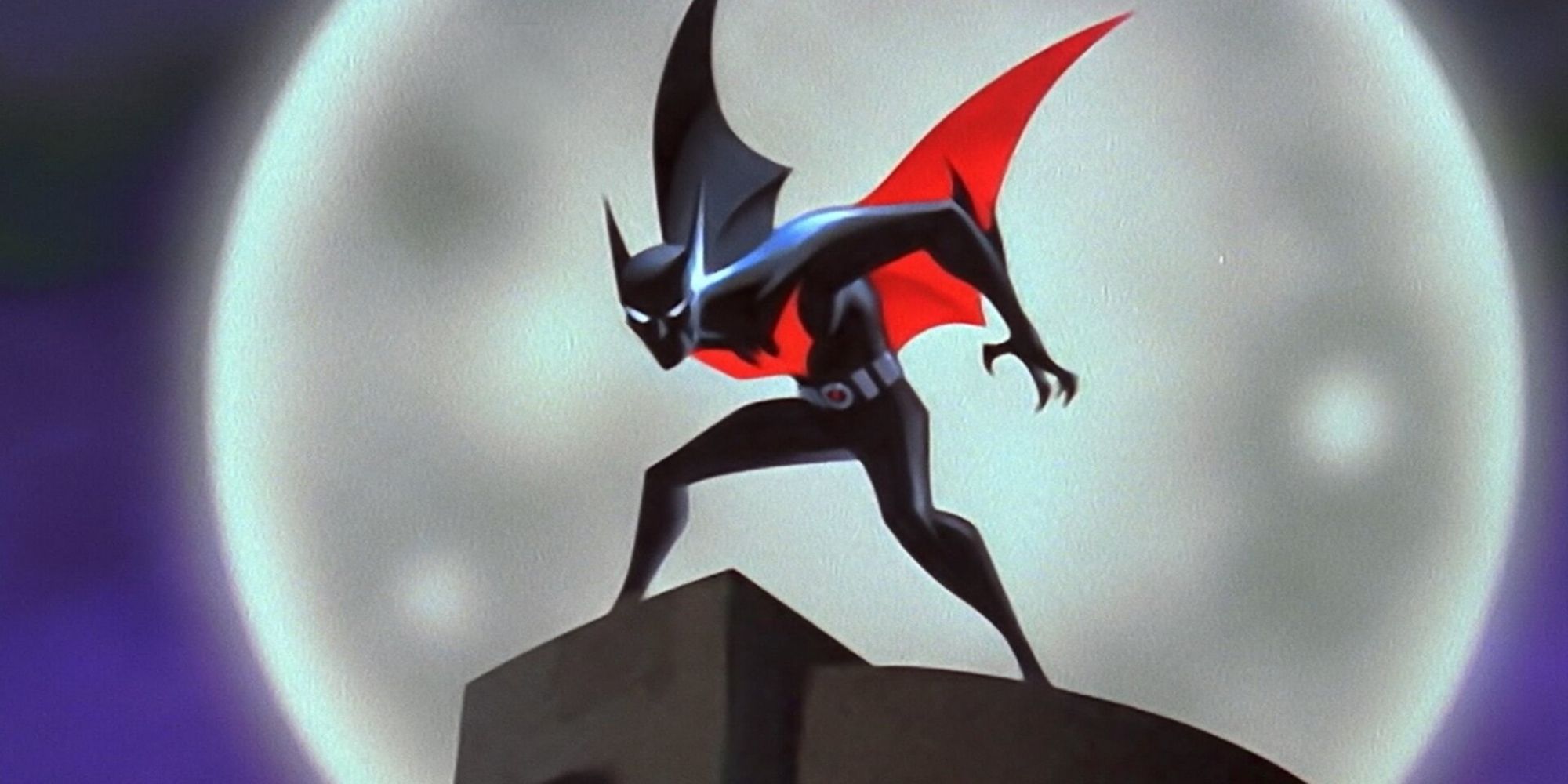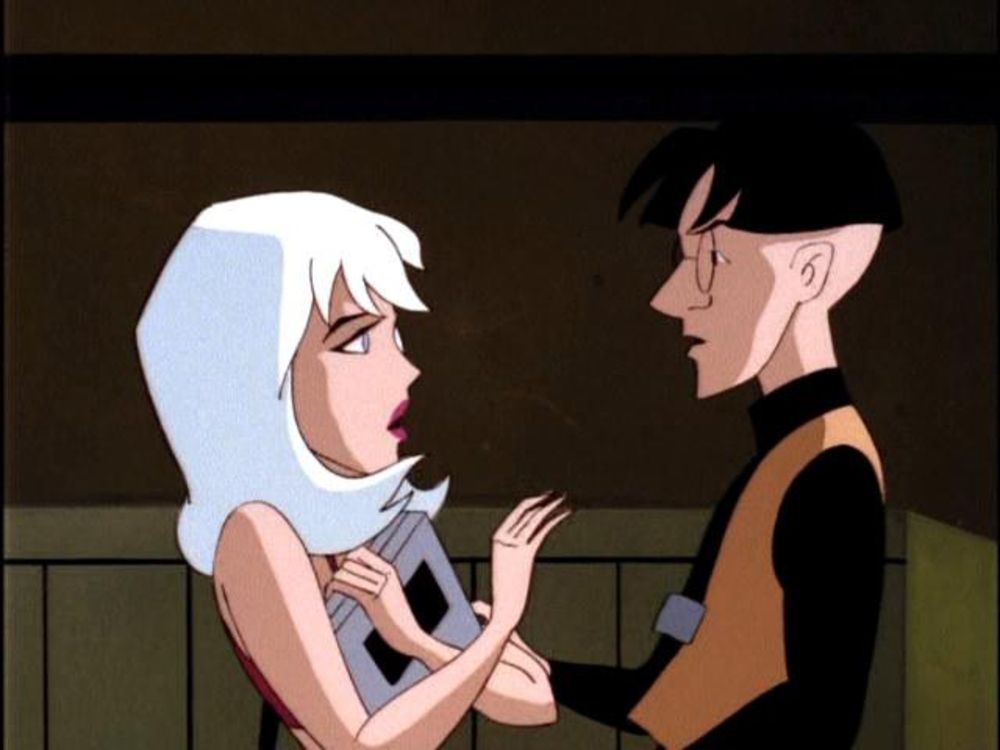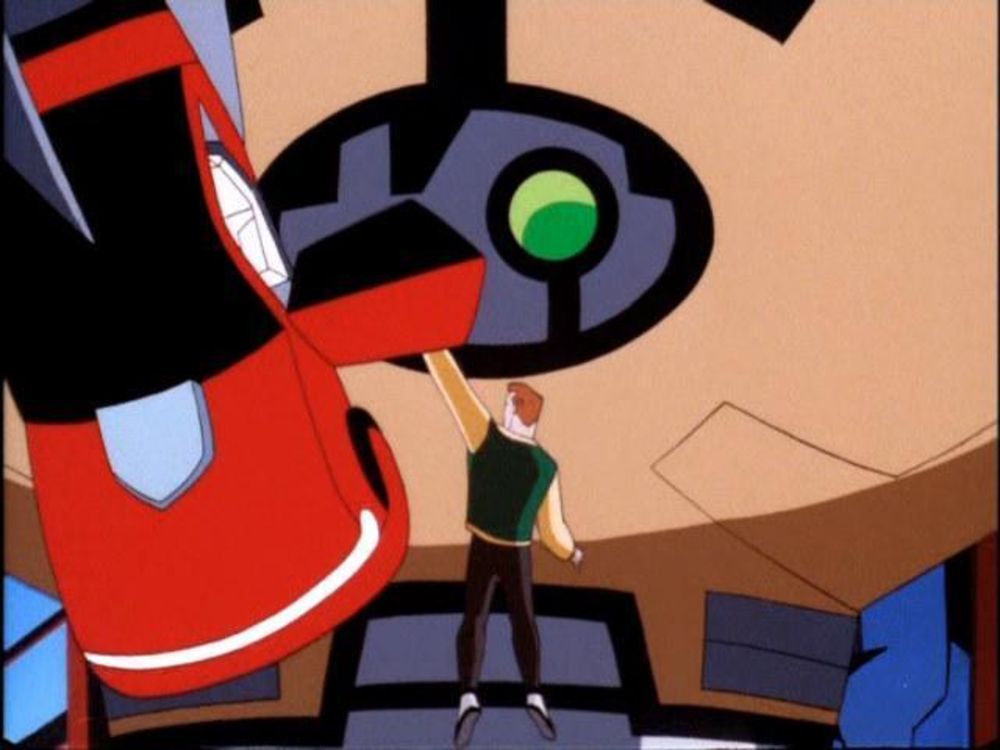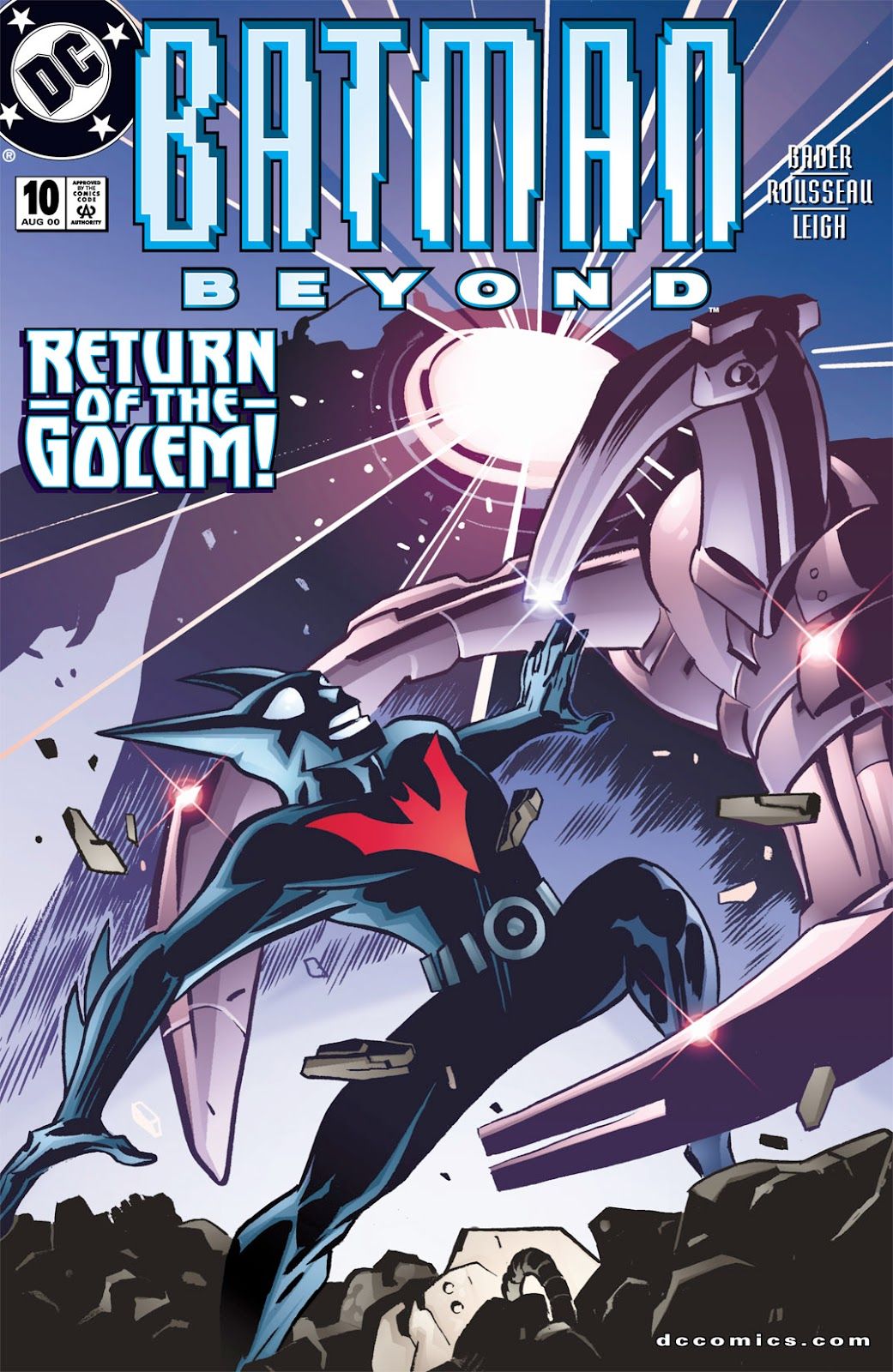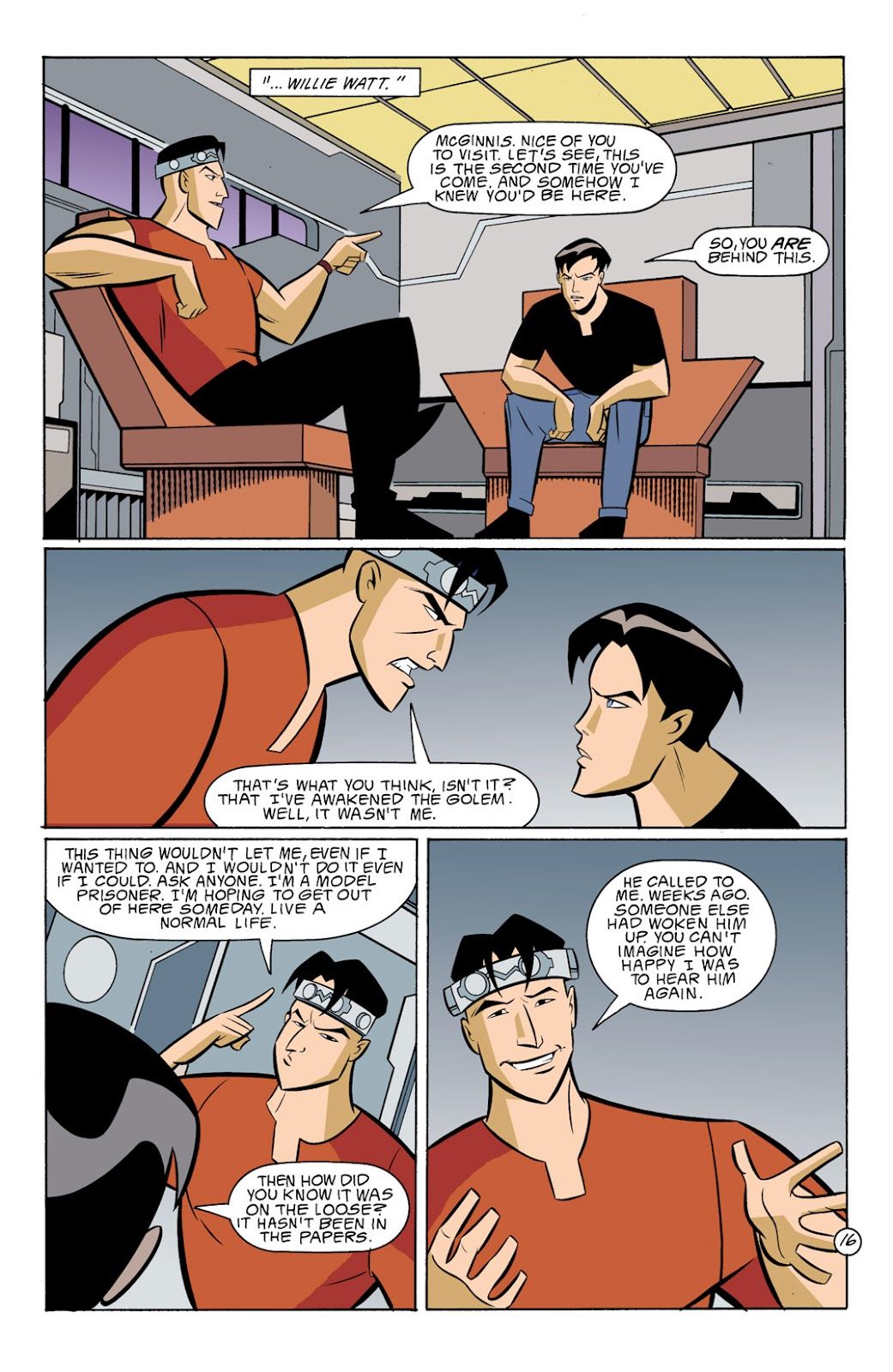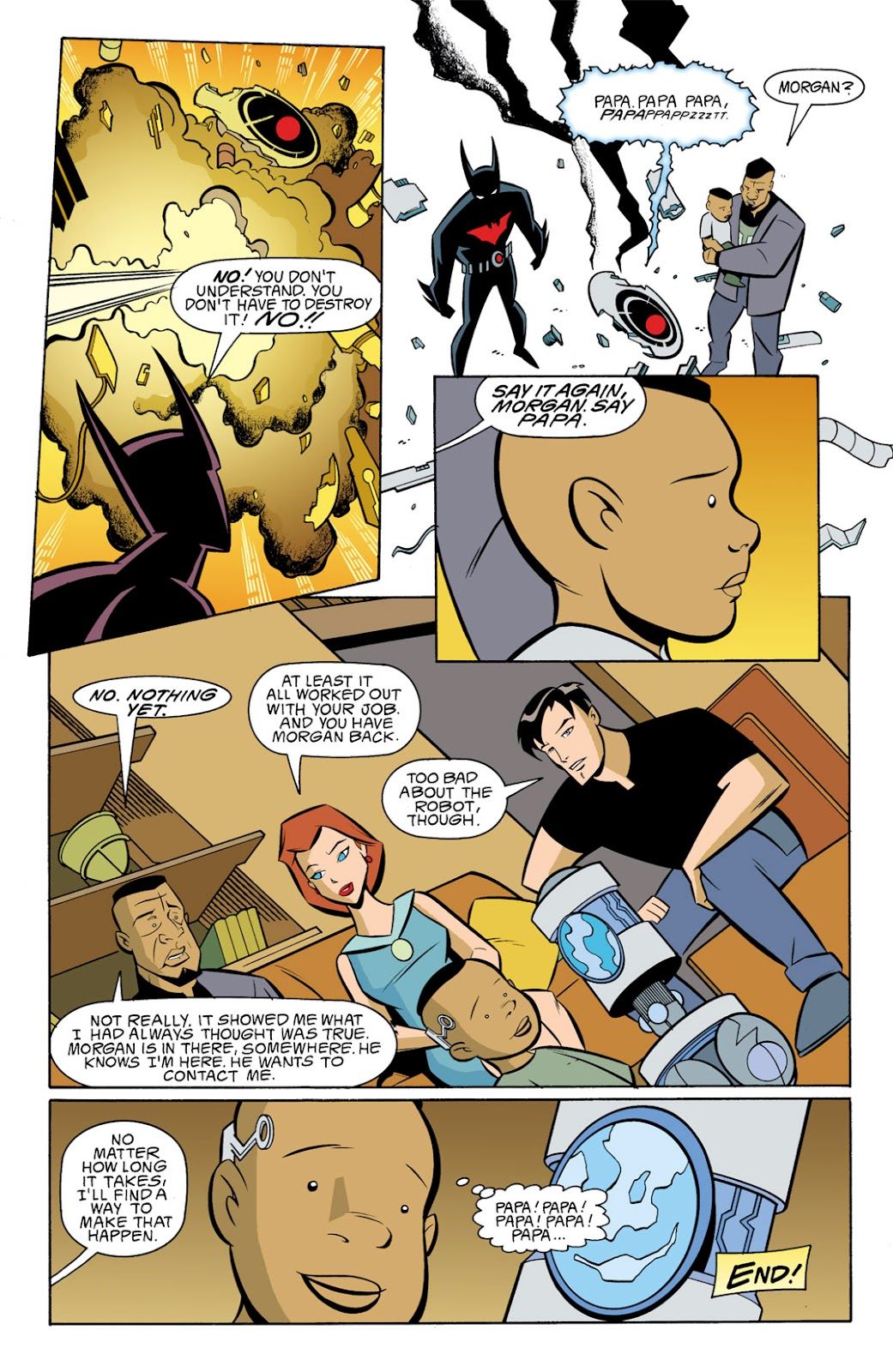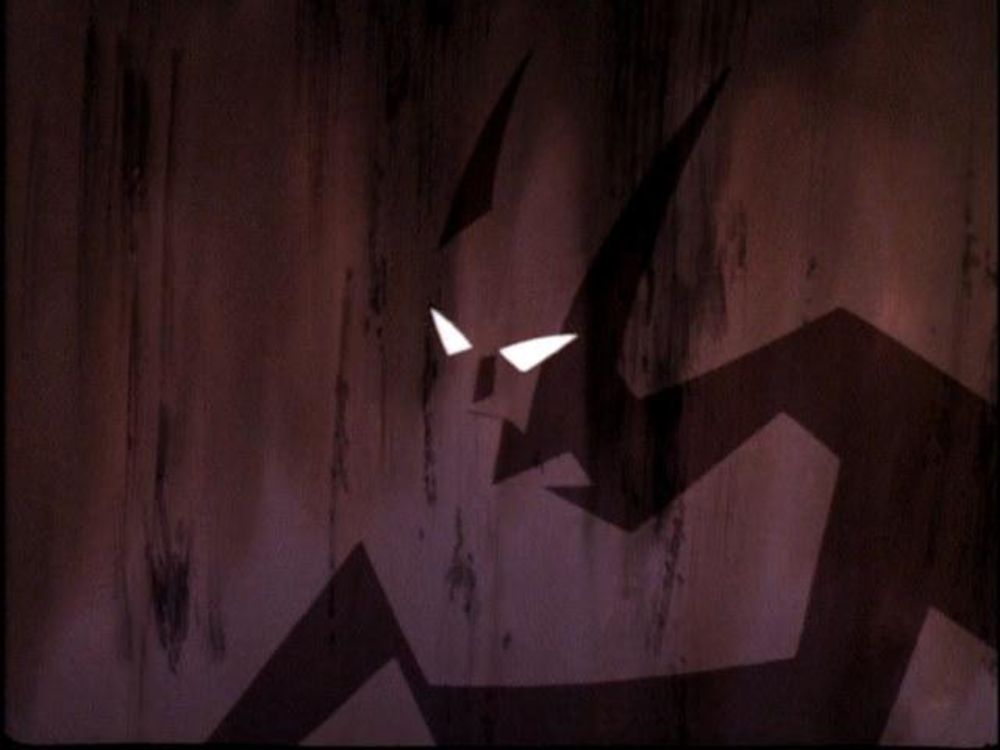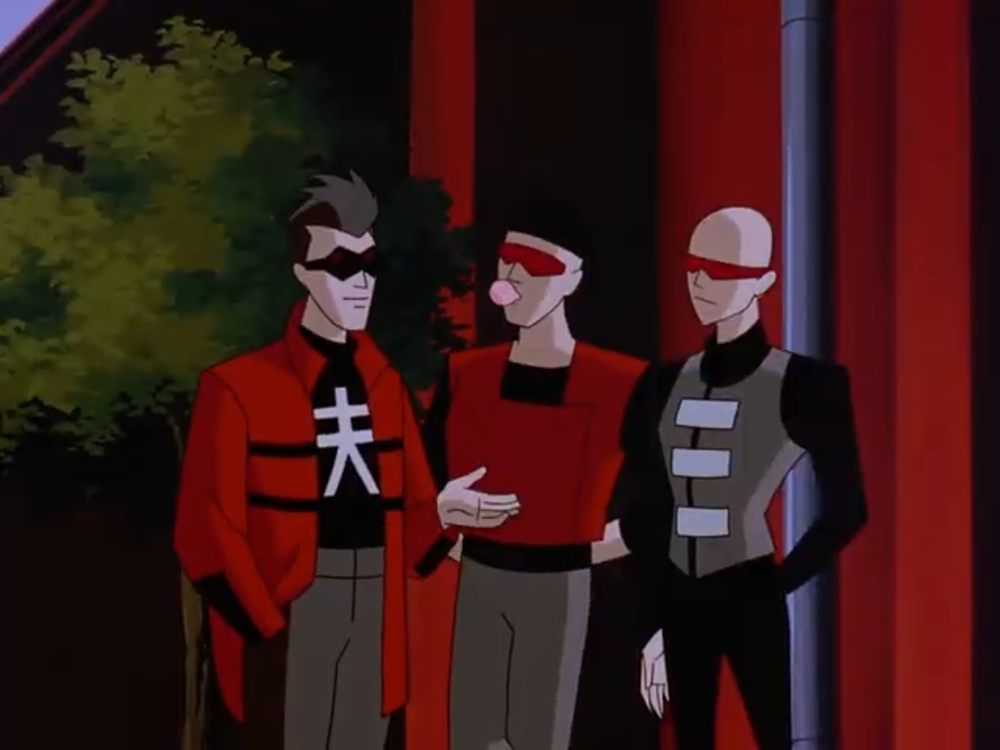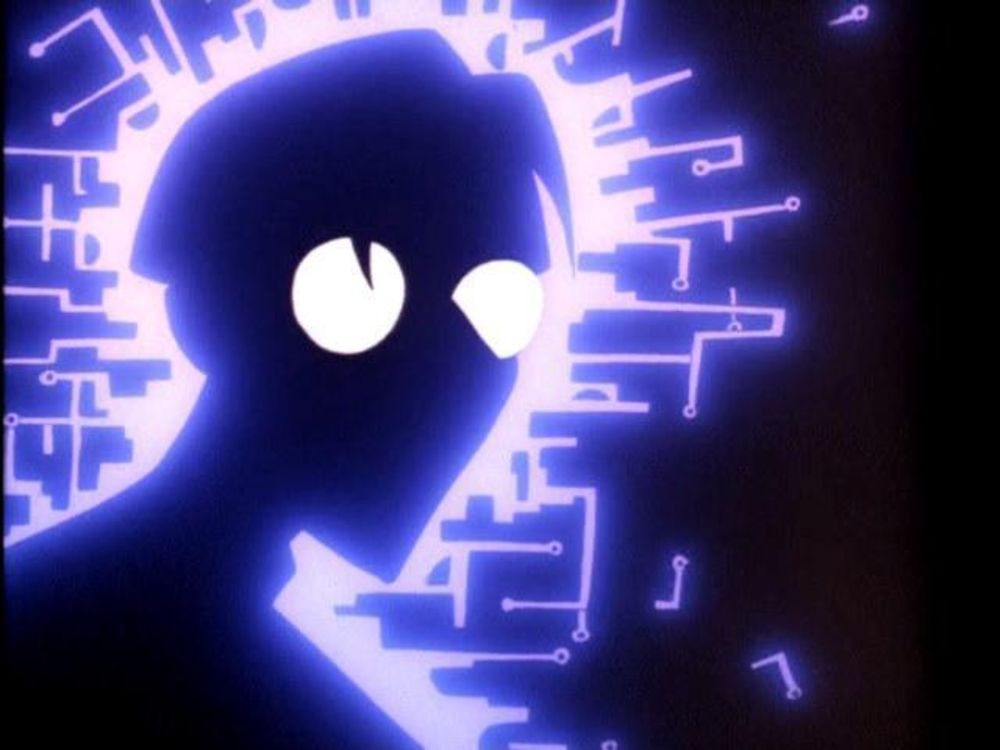Welcome to Adventure(s) Time's 131st installment, a look at animated heroes of the past. This week, an obscure sequel to one of the more famous Batman Beyond episodes, penned by the episode's author for the tie-in comic. And if you have any suggestions for the future, let me hear them. Just contact me on Twitter.
Debuting on February 7, 1999, "Golem" comes from writer Hilary J. Bader and director Butch Lukic. The episode is one of the first to deal with the high school life of new Batman Terry McGinnis, who just so happens to be surrounded by a plethora of potential villains at his school. A network mandate from the second season on will have the focus shift to the teenage element, meaning "Golem" sets the template for much of the future of Beyond.
The story opens with awkward teen Willie Watt clumsily attempting to strike up a conversation with popular girl Blade Sommer. Her boyfriend Nelson Nash appears and shoves Willie away, leading to a confrontation that requires Terry to rescue Willie. Nelson is an obvious analogue for Flash Thompson, Peter Parker's high school bully from the early Amazing Spider-Man issues. Though her personality isn't quite a match, Blade also appears to be a nod towards Spider-Man's famous love interest Gwen Stacy, who was also a popular girl with literally platinum hair.
Just as the jock and popular girl are stock personality types, so is Willie. He's an alienated nerd with an overbearing father, unable to disguise his disgust for his wimpy son. And because this is an action-adventure series set in the future, his father operates a massive construction robot known as the G.L.M. (Nicknamed the Golem, though the spelling really should be "GoLeM"). When his father Frank demands Willie fight back against his bullies, Willie is inspired to steal the Golem and terrorize Nelson.
Nelson is soon targeted by the Golem. Batman intervenes, tricking the robot into striking nearby power cables and causing its circuitry to overload. This overload feeds back into Willie through the robot's headband remote control, creating a psychic bond between boy and robot. After Sommer and Nelson humiliate Willie at the school dance, Willie grows mad with power, going on a citywide rampage.
Frank arrives to talk his son down...which only serves to agitate Willie. Instead of killing Batman, Willie now attempts to murder his father. It's the episode's first true deviation from a stock plot. Typically, when the parental figure appears to apologize, the disenfranchised child is overwhelmed by love and empathy and sees the error of their ways. Willie, however, is relentlessly unsympathetic. Ultimately, Batman rescues Frank and destroys the Golem. Frank takes some solace is knowing his son is no longer the spineless wimp he bullied earlier. Great.
Willie is sentenced to three years in juvenile hall, where he remains a target for bullies. We discover in the closing moments however, that Willie is not powerless without the Golem. He possesses the ability to control electronics, leading to a final image of exploding televisions and an implication Willie's bullies aren't going to be getting off easy.
Willie later reappeared in the Season 2 episode "Revenant," where he used his powers to torment his former classmates from afar. But Bader also penned another story involving Willie and the Golem, which appeared in the August 2000 issue of Batman Beyond's tie-in comic.
Featuring art from Craig Rousseau and a cover from Beyond animator Ronnie del Carmen (later the co-director of Pixar's Inside Out), "Toy Wonder" is the tenth issue of the comic. The book often featured sequel stories written by Bader, giving this title a continuity with the animated series the other Adventures titles often lacked.
The story begins with a visit from Terry's neighbor Sam and his autistic son Morgan, who apparently have regular playdates with Terry's brother, Matt. Sam is an ex-con who turned his life around to care for his son, he casually tells us in his opening scene. He's created a headgear set that enables Morgan to telepathically control a toy robot with scrap parts from his work. The toy is Morgan's only true means of communicating with the outside world.
Only minutes later, however, Sam is arrested on suspicion of theft and Morgan is taken away by social services. Bruce Wayne pays Sam's bail, confident the case is bogus (Sam's unfairly a suspect because of his past), but warns Sam to stay away from his son until everything is resolved. Batman investigates the site where Sam collects the junk parts, while unbeknownst to him, Morgan's robot is collecting its own parts and growing larger.
In the junk pile, Batman discovers Golem technology that should've been destroyed, dangerous gear Sam was unwittingly using to create his son's robot. The robot appears and attacks Batman, who narrowly escapes. Terry then visits juvie hall to talk to Willie, who consistent with his appearance in "Revenant," is now jacked beyond belief.
Willie reveals he has felt the telepathic pull of the Golem lately, but the robot no longer responds to him. It has a new master, one that shouldn't be difficult to guess.
Soon, Sam breaks the rules and tries to contact Morgan, which leads to an ugly confrontation between Sam and the authorities, right before Morgan's eyes. Agitated, Morgan summons the new Golem, which goes on a rampage. Batman discerns the only way to stop the robot is for Morgan to be reunited in Sam's arms. As Morgan and Sam embrace, the robot speaks for Morgan, saying his first word, "Papa."
During the pause in fighting, the police eradicate the robot, thus eliminating Morgan's ability to communicate with the outside world. This easily could've been played as just as dark an ending as "Golem," but Bader makes sure the final conversation leaves us with hope for Morgan's future.
DESIGN-Y
Some cool design work this episode, as we see the debut of Batman's stealth capabilities.
There's also some teen fashion inspired by Frank Miller's work in Dark Knight Returns.
And though Willie wouldn't seem to be a visually evocative character, Butch Lukic makes sure he does look darn cool when using his powers.
CONTINUITY NOTES
The Marvel references don't end with Terry's high school classmates. In the final battle in "Golem," Batman drops Frank Watt into a tub full of carnival dolls clearly meant to evoke the Captain America villain M.O.D.O.K. Batman also adopts Spider-Man's famous pose from the cover of Amazing Fantasy #15 when rescuing Nelson during the episode's climax.
"Toy Wonder" has Morgan relocated to the Timm Dini Foster Center for Boys, a nod towards two of the show's creators, Bruce Timm and Paul Dini.
HEY, I KNOW THAT VOICE
Willie was voiced by an actual teen at the time, actor Scott McAfee. McAfee is best known as the voice of Littlefoot in The Land Before Time films.
APPROVED BY BROADCAST STANDARDS & PRACTICES
A conversation between Nelson and Sommer, where he asks "How 'bout a ride?" then clarifies he isn't "talking about cars" was surprisingly suggestive. Some fans claim this exchange was censored when the episode was later reaired, but it is on the DVD release.
"NOT A WUSS ANYMORE!"
"Golem" is an early indication of the unusually cynical world of Batman Beyond. There's not much of an effort to make the characters likeable, not even the hero. (This episode won't be the only time Batman causes the villain serious harm or essentially kills them and feels not even a pang of remorse.) This is a story where adults are just as petty and heartless as the teens, and by the end, no one has undergone any real growth or learned any lesson. This isn't necessarily bad writing, if anything it could be seen as an acknowledgement of superheroes' dark origins from the pulps, but it's jarring when considering the context of the series. This was a Saturday morning cartoon aimed at a younger audience than Batman: The Animated Series.
Even more disturbing is that "Golem" seems to be basing Willie on the typical profile of school shooters -- alienated teens who lash out at the world. If the episode had been scheduled a few months later, following the Columbine shooting, it's possible the network would've pulled it. "Toy Wonder," meanwhile, has a cynical edge to it, but Bader makes certain to go out on a hopeful note. Her comics stories typically don't have the dour endings of the Beyond episodes, implying some editorial influence or personal choice to keep the comics lighter. This time, the result is a comic that's just fine for the younger readers DC wanted, but not particularly memorable.
Hey, my latest novel Love is Dead(ly) is now free on Kindle Unlimited. Meet Brad Burns, the Paranormal Desperado you'll either love to hate or hate to love!

